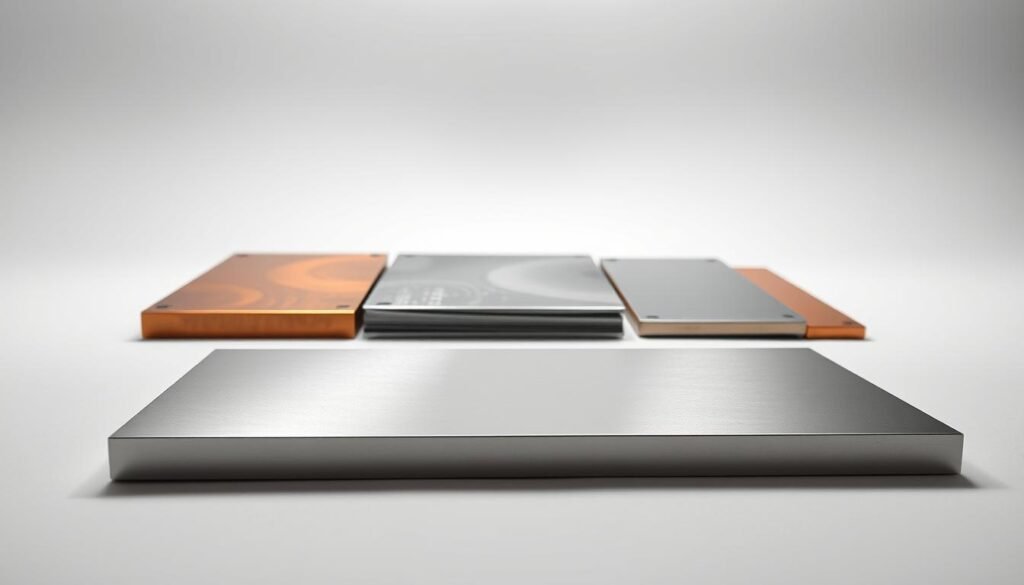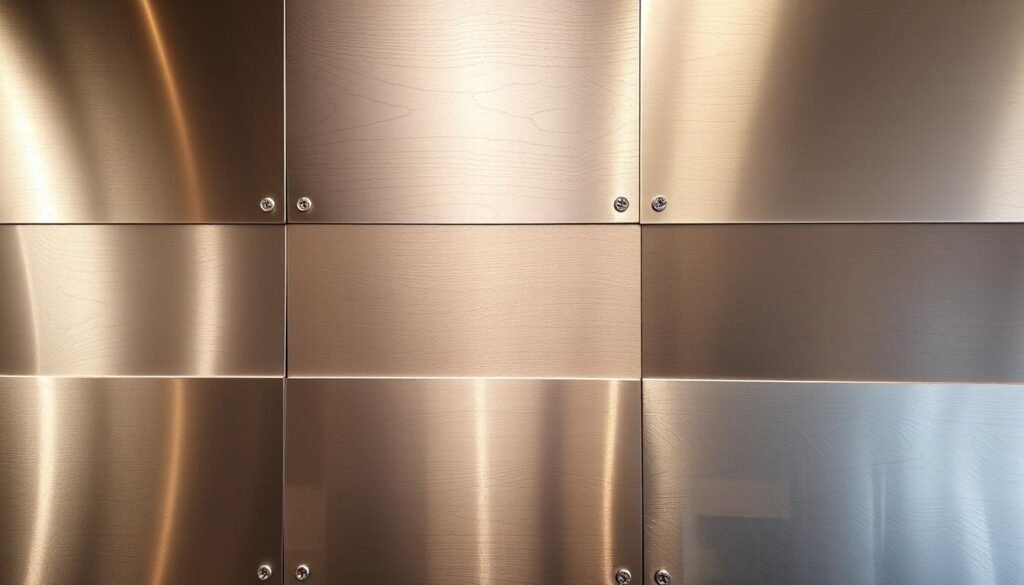Anodizing is a widely used surface treatment technology that enhances the wear and corrosion resistance of metals, while also providing a range of aesthetic options. However, its application on stainless steel is a topic of debate.
The anodizing process, typically used for aluminum, involves an electrochemical treatment that alters the metal’s surface properties. When it comes to stainless steel, the conventional anodizing process is not suitable due to the risk of corrosion and dissolution of the metal.
Despite these challenges, there are alternative methods that can achieve an anodized effect on stainless steel. This article will explore the complexities of anodizing metal, the differences between anodizing aluminum and stainless steel, and the available alternatives.
Understanding Stainless Steel and Anodization
To comprehend the feasibility of anodizing stainless steel, it’s essential to understand the fundamental properties of stainless steel and the anodization process. This understanding will provide a foundation for exploring the challenges and potential benefits of anodizing stainless steel.
What is Stainless Steel?
Stainless steel is a corrosion-resistant metal alloy primarily composed of iron, chromium, and sometimes other elements like nickel or molybdenum. The addition of chromium provides corrosion resistance by forming a thin, transparent layer of oxide on the surface. This inherent property makes stainless steel a popular choice for applications where durability and resistance to environmental degradation are crucial.
The Traditional Anodizing Process
Anodizing is an electrochemical process that enhances the surface properties of metals, typically aluminum. It involves submerging the metal in an electrolytic bath and passing an electric current through it, resulting in the formation of an oxide layer on the metal’s surface. This layer provides improved corrosion resistance, increased surface hardness, and a durable finish that can be colored or left in its natural state.
Why Anodize Metals?
Anodizing metals offers several benefits, including enhanced corrosion resistance, increased surface hardness, and improved wear resistance. The anodized layer also provides an excellent base for secondary coatings such as paints, lubricants, and adhesives. The table below summarizes the key advantages of anodizing metals.
| Benefit | Description |
|---|---|
| Corrosion Resistance | Enhanced protection against environmental degradation |
| Surface Hardness | Increased durability and resistance to wear |
| Aesthetic Flexibility | Ability to add color through dyeing or interference coloration |
| Adhesion for Coatings | Excellent base for paints, lubricants, and adhesives |
Understanding these benefits helps clarify why anodizing is a sought-after treatment for metals, despite the technical challenges associated with anodizing certain materials like stainless steel.
Can Stainless Steel Be Anodized?
While traditional anodizing methods don’t work well with stainless steel, recent advancements have changed the game. The anodization process, known for enhancing the durability and aesthetic appeal of metals, has been successfully adapted for stainless steel in specialized applications.
The Short Answer
The straightforward answer is that traditional anodizing processes are not suitable for stainless steel due to its inherent properties. However, specialized processes have been developed to anodize stainless steel, offering durable and colored finishes.
Challenges of Anodizing Stainless Steel
Anodizing stainless steel poses several challenges, primarily due to its high chromium content and the formation of a passive oxide layer. This layer hinders the anodizing process, making it difficult to achieve a consistent and durable finish.
The main challenges include:
- Difficulty in achieving a uniform oxide layer
- The need for highly specialized equipment and processes
- Ensuring the durability and adhesion of the anodized layer
Recent Developments in Stainless Steel Anodizing
Recent years have seen significant advancements in the anodizing of stainless steel, driven by demand from industries such as medical instruments, architectural elements, and luxury consumer goods. Companies like Russamer Lab have developed proprietary processes that enable the creation of durable, colored oxide layers on stainless steel surfaces.
According to Anna Berkovich from Russamer Lab, “We have developed stainless coating that provides the same (or similar) range of colors as titanium anodizing (plus black), and the colors are perfectly durable.” This development has made stainless steel anodizing commercially viable for high-value applications.
The innovations include advancements in electrolyte formulations, current control methods, and post-treatment processes. These developments have overcome some of the traditional limitations, making it possible to achieve a range of colors on stainless steel.
| Industry | Application | Benefits of Anodized Stainless Steel |
|---|---|---|
| Medical | Surgical Instruments | Enhanced durability, corrosion resistance, and aesthetic appeal |
| Architectural | Decorative Elements | Unique colors, increased durability, and low maintenance |
| Consumer Goods | Luxury Products | Aesthetic customization, enhanced premium feel |
The Process of Anodizing Stainless Steel
The anodizing process for stainless steel involves multiple steps, each critical to achieving the desired outcome. Anodizing enhances the corrosion resistance and durability of stainless steel, making it suitable for a wide range of applications.
Surface Preparation Requirements
Surface preparation is a crucial step in the anodizing process. The stainless steel surface must be thoroughly cleaned and free of contaminants to ensure a uniform anodized layer. This involves degreasing, pickling, and rinsing the surface to remove any dirt, oil, or other substances that could interfere with the anodizing process.
Electrolyte Selection and Preparation
The choice of electrolyte is critical in anodizing stainless steel. The electrolyte used can affect the thickness, color, and properties of the anodized layer. Common electrolytes used for anodizing stainless steel include sulfuric acid and chromic acid solutions. The electrolyte must be carefully prepared and maintained at the correct concentration and temperature to achieve the desired results.
The Anodizing Procedure
Once the surface is prepared and the electrolyte is selected, the anodizing process can begin. The stainless steel part is immersed in the electrolyte and subjected to an electric current, which causes the formation of a thick, oxide layer on the surface. The duration of the anodizing process and the current density used will determine the thickness and properties of the anodized layer.
Post-Anodizing Treatments
After anodizing, the part undergoes several post-anodizing treatments to enhance its properties. These treatments include:
- Rinsing with deionized water to remove electrolyte residue
- Neutralization with a weak acid solution if an alkaline electrolyte was used
- Sealing with boiling water, steam, or chemical sealers to enhance corrosion resistance
- Coloring with organic or inorganic dyes to achieve the desired aesthetic appearance
The post-anodizing treatments are essential for achieving a durable and functional anodized layer. The following table summarizes the key post-anodizing treatments and their benefits:
| Treatment | Purpose | Benefits |
|---|---|---|
| Rinsing | Remove electrolyte residue | Prevents contamination and ensures a clean surface |
| Neutralization | Balance surface pH | Prevents alkaline residue from affecting the anodized layer |
| Sealing | Enhance corrosion resistance | Improves durability and resistance to corrosion |
| Coloring | Achieve desired color | Enhances aesthetic appearance and can be used for identification purposes |
By following these steps and treatments, anodized stainless steel can be produced with enhanced properties and appearance, making it suitable for various applications.
Comparing Anodized Stainless Steel to Other Metals
Anodizing is a versatile process that can be applied to various metals, each with its unique properties and applications. This section will explore how anodized stainless steel compares to other commonly anodized metals, such as aluminum and titanium.
Stainless Steel vs. Aluminum Anodizing
Aluminum is the most commonly anodized metal due to its ideal properties for the anodizing process. It is widely used in industries such as aerospace, automotive, and electronics. Anodizing enhances aluminum’s corrosion resistance, surface hardness, and allows for coloring. In contrast, stainless steel requires a more specialized anodizing process. While both metals can be anodized to improve their corrosion resistance, aluminum is generally more straightforward to anodize than stainless steel.
Key differences between anodizing aluminum and stainless steel include:
- Process complexity: Aluminum anodizing is more established and less complex.
- Corrosion resistance: Both can be improved, but through different oxide layers.
- Application: Aluminum is used in lighter applications, while stainless steel is preferred in high-strength, corrosion-resistant applications.
Stainless Steel vs. Titanium Anodizing
Titanium is another metal that is frequently anodized, particularly for medical implants, jewelry, and aerospace applications. Anodizing titanium produces vivid interference colors without the need for dyes, making it aesthetically versatile. Like stainless steel, titanium forms a robust oxide layer during anodizing, enhancing its corrosion resistance. However, titanium’s anodizing process is somewhat more forgiving than that of stainless steel.

Other Metals That Can Be Anodized
Besides aluminum, titanium, and stainless steel, other metals that can be anodized include magnesium, niobium, tantalum, and zinc. Each of these metals forms different types of oxide layers during anodizing, with varying properties and applications suited to their unique characteristics.
| Metal | Anodizing Characteristics | Common Applications |
|---|---|---|
| Aluminum | Enhances corrosion resistance and surface hardness | Aerospace, automotive, electronics |
| Titanium | Produces vivid interference colors, enhances corrosion resistance | Medical implants, jewelry, aerospace |
| Stainless Steel | Improves corrosion resistance, requires specialized process | High-strength, corrosion-resistant applications |
| Magnesium | Used for lightweight, corrosion-resistant applications | Automotive, aerospace parts |
Benefits and Limitations of Anodized Stainless Steel
When evaluating the suitability of anodizing for stainless steel, it’s crucial to weigh its benefits against its limitations. Anodizing is a process that enhances the surface properties of stainless steel, offering improved corrosion resistance and aesthetic appeal.
Advantages of Anodizing Stainless Steel
Anodizing stainless steel provides several advantages, including enhanced corrosion resistance due to the formation of a thicker oxide layer on the surface. This process also allows for the achievement of various colors through interference effects, improving the aesthetic versatility of stainless steel. Furthermore, anodized stainless steel exhibits improved surface hardness, contributing to its durability.
The anodizing process is relatively environmentally friendly compared to other surface treatment methods, as it doesn’t involve the use of toxic chemicals. Additionally, the resulting coating is integral to the substrate, reducing the likelihood of delamination or peeling.
Disadvantages and Limitations
Despite its advantages, anodizing stainless steel has several limitations. One significant drawback is the increased cost associated with the anodizing process, which involves high-cost equipment and chemicals. Moreover, the color selection for anodized stainless steel may be limited compared to other surface treatment processes like painting or PVD coating.
Regular maintenance is required to ensure the appearance and performance of the anodized layer, particularly in corrosive environments where the oxide layer can be more easily damaged. The anodizing process may also not be suitable for all types of stainless steel, especially in high-temperature or highly corrosive environments.
Understanding these limitations is crucial for determining whether anodized stainless steel is appropriate for a specific application. By weighing the benefits against the drawbacks, industries can make informed decisions about the use of anodized stainless steel in their products.
Alternative Surface Treatments for Stainless Steel

Beyond anodizing, there are multiple surface treatment options for stainless steel that offer unique benefits. These alternatives can enhance the performance, appearance, and durability of stainless steel components.
Passivation
Passivation is a chemical treatment that removes free iron from the surface of stainless steel, enhancing its corrosion resistance. This process involves treating the steel with a chemical solution that forms a protective oxide layer.
Electropolishing
Electropolishing is an electrochemical process that polishes and cleans the surface of stainless steel. It improves the surface finish, reduces roughness, and enhances the material’s resistance to corrosion.
Physical Vapor Deposition (PVD) Coating
PVD coating involves depositing a thin layer of material onto the stainless steel surface using a vapor deposition process. This technique can improve wear resistance, corrosion resistance, and aesthetic appeal.
Spray Coating
Spray coating applies a layer of material onto the stainless steel surface using a spraying process. This method can provide a decorative finish and some level of protection against corrosion.
Comparison of Surface Treatments
When comparing these surface treatments, factors such as corrosion resistance, wear resistance, appearance, cost, and process complexity come into play. For instance, PVD coating offers superior wear resistance and corrosion resistance, while passivation is a simpler and more cost-effective method for enhancing corrosion resistance.
The choice of surface treatment depends on the intended application and environmental conditions. For high-temperature or extreme environments, PVD coating may be the preferred option due to its superior performance. In contrast, electropolishing is ideal for applications requiring high cleanliness and surface finish.
Applications of Anodized Stainless Steel
The unique properties of anodized stainless steel make it an ideal material for a wide range of applications. Anodized stainless steel offers a combination of enhanced durability, corrosion resistance, and aesthetic appeal, making it suitable for various industries.
Architectural and Decorative Uses
Anodized stainless steel is widely used in architectural and decorative applications due to its ability to provide a unique appearance. The process of anodizing allows for the creation of various colors, enhancing the material’s visual appeal. It is often used in building facades, handrails, and decorative features.

Medical and Surgical Equipment
In the medical field, anodized stainless steel is used for surgical equipment due to its corrosion resistance and ability to withstand sterilization processes. The durability of anodized stainless steel ensures that medical instruments remain in good condition, even after repeated use and cleaning.
Consumer Products
Anodized stainless steel is incorporated into various consumer products, including high-end home appliances and consumer electronics. For instance, black anodized stainless steel is used in premium refrigerator panels and mobile phone shells. The unique color and finish achievable through anodizing allow manufacturers to differentiate their products in competitive markets.
The use of anodized stainless steel in consumer goods such as high-end watches, kitchen appliances, and luxury writing instruments is becoming increasingly popular. This is because anodized stainless steel combines the perceived quality and durability of stainless steel with enhanced visual appeal, making it attractive for premium product categories.
Conclusion
The process of anodizing stainless steel, while technically possible, presents several challenges that differentiate it from anodizing other metals like aluminum. Despite these challenges, specialized stainless steel anodizing can offer unique benefits in niche applications that justify the complexity and cost.
However, for most applications, alternative surface treatments such as passivation, electropolishing, PVD coating, and spray coatings may be more practical. These methods can provide the desired surface properties without the need for the specialized equipment and expertise required for anodizing stainless steel.
It’s also important to note that attempting to anodize stainless steel at home is not recommended due to the precise control required over the electrolyte and current in the anodizing process. For those requiring anodized stainless steel, it is advisable to consult a professional surface treatment company.
In conclusion, while anodizing stainless steel is possible, understanding its limitations and considering alternative surface treatments is crucial for making informed decisions based on specific requirements for appearance, durability, and performance.
